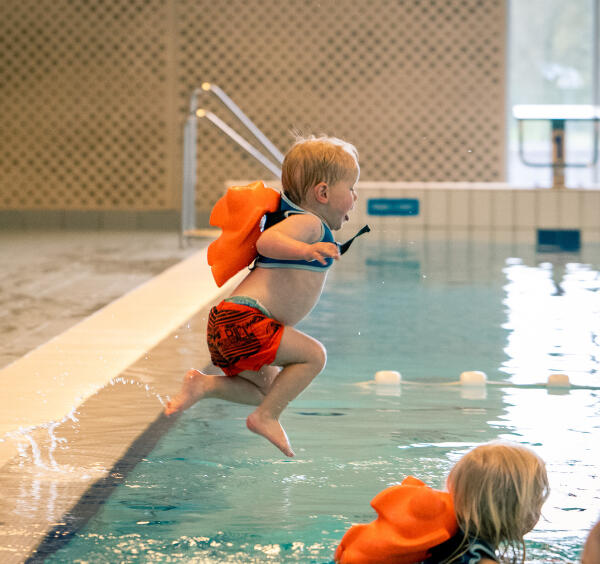1
Instructor - Task 2.2.1 - EXTRA - Fibby swimming
Instructor - Task 2.2.1 - EXTRA - Fibby swimming
Content
Children aged 2-4 years usually do not yet have the motor skills and strength to successfully participate in the ABC swimming program. However, they face significant risks, which increase as a child becomes more attracted to water. Therefore, it is important to teach these young children water safety skills. You will teach the children:
- Not to be afraid in the water
- How to move freely in the water
- How to stay calm if they fall into the water
- How to reach the edge of the pool when needed
The Fibby is an approved tool that has significant advantages over other aids such as arm bands, floats, and life jackets.

The Fibby allows a child to move their arms and legs freely. Without mastering swim strokes, a child who can walk will start paddling, kicking, and seeking balance with their body and arms. Once they master these movements, they can propel themselves with hands and feet using, for example, a doggy paddle or any other method they come up with. Initially, they use the Fibby, and after sufficient practice, they can swim without it. This makes them much safer in the water and better prepared for swimming diplomas.
At this young age, children learn primarily through imitation, experimentation, and play. Therefore, teaching methods can be quite different from those used for diploma swimming.
Additionally, at this age, you can involve parents in the practice sessions with their child using the Fibby. It's quality time for parents who enjoy it and also helps the child feel safer with a parent present.
We'll teach you:
- What you can do with a Fibby
- Games parents can play
- What parents can demonstrate and encourage
- How to positively guide parent and child interactions
Get activity badge
FibbyBuddy Get this badge
After earning this badge, you'll be able to guide parents on how to help their child become comfortable and self-reliant in the water, while also ensuring that parent and child enjoy their time together in the water.
Tasks
Task no.1
Issued by organiser or scanning QR code
You'll learn to teach children, initially with and later without Fibby, how to save themselves in the water.
Awero not-for-profit organisation manages this platform and develops it together with leading educational organisations. The European Union's programme Erasmus+ granted co-funding for building the first version of this platform. Contact support@awero.org.
Platform
Change to another language:
